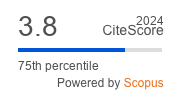Article | Open Access
Planning the Smart City With Young People: Teenagers’ Perceptions, Values and Visions of Smartness
| Views: | 23724 | | | Downloads: | 3856 |
Abstract: Young people are often seen as “future citizens” and therefore relegated to a back seat in the planning process, awaiting their coming of age. Recent digital transformations in planning have brought new consultation processes but also created a digital divide and conflicting agendas. This article engages with youth, specifically teenagers, a heterogenous community stuck between childhood and adulthood, assumed to possess the necessary digital skills, but usually overlooked in participatory planning processes. This article will examine the case study cities of Manchester, Birmingham, Valencia, and Sofia, where 121 teenagers between 15 and 19 years of age have been interviewed in relation to their awareness and perceptions of digital technologies and smart cities. It focuses on critically examining young people’s perceptions and values towards the smart city. Using the smart city wheel as an engagement and discussion tool, the article presents teenagers’ critique of smart city models and future city visions. The article categorises common threads and values that this demographic has espoused and presents cautionary tales relating to awareness and skills development in this age group. Throughout the interviews and surveys, young people in all four case studies have reported strong affiliations to specific modes of inhabiting the city and values that they would like to see reflected in any future visions. The article identifies key considerations for planners and smart city practitioners when engaging young people in the creation of future city visions.
Keywords: city visions; participation; smart cities; teenagers; urban planning; young people
Published:
Online discussion: Watch the conversation about this article on Let's Talk About
© Simeon Shtebunaev, Silvia Gullino, Peter J. Larkham. This is an open access article distributed under the terms of the Creative Commons Attribution 4.0 license (http://creativecommons.org/licenses/by/4.0), which permits any use, distribution, and reproduction of the work without further permission provided the original author(s) and source are credited.


